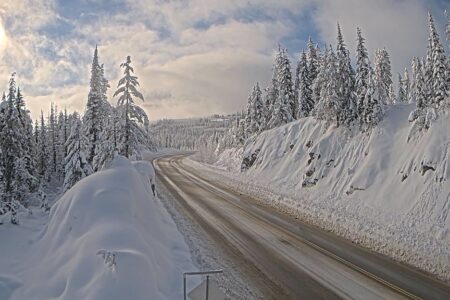LETTER: Is Rossland a 'fat' energy town? And does the Energy Diet help the poor?
Dear editor,
It has recently been stated in a local news publication that “Rossland held the notorious tag as the fattest energy town in BC last year”. This deserves comment and correction.
Where on Earth does this myth originate? If this originates from the Energy Diet folks, they should do their homework before making such statements. A draft Community Energy Plan I wrote in 2011 when I was a member of the Rossland Energy Task Force includes a section on “Benchmarking” or comparison of Rosslands energy performance with other communities
This used energy consumption numbers from the BC Government’s Community Energy and Emissions Inventory (CEEI) as a basis for comparison. Energy usage in Gigajoules per capita per year can be calculated and compared with other communities to show that this statement is so far from the truth that I used the term “myth”.
Using the latest CEEI data, Rossland’s per capita energy use (132 GJ/capita/year) is certainly higher than towns and cities on the coast such as Vancouver (83), Victoria (103), Richmond (101), and Abbotsford (107). However it is far less than towns in northern BC such as Fort St John (196), Smithers (216), Dawson Creek (216), and McBride (230).
It should be obvious from these numbers that if energy use is to be compared with other BC communities then the data has to be adjusted to address differences in climate, specifically temperatures. The term used by energy professionals is “normalising”.
Looking closer to home in the Kootenays and comparing Rossland with similar communities and climates; Rossland (132) does a lot better than many such as Creston (145), Trail (155), Cranbrook (158), Revelstoke (159), Kimberley (160), Fruitvale (172), Nakusp (199), and Fernie (204). We are slightly behind Nelson (127) and Castlegar (130), but not by much!
By using climate data, it is possible to compare residential building energy use in communities around the Province with vastly different climates on an “apples versus apples” basis by “normalising” using ‘Heating Degree Days’.
Comparing the per capita energy use for residential buildings in 23 communities all over the province for which climate data is readily available, from Osoyoos to Fort St John and Victoria to Cranbrook, it turns out that Rossland ranks in 10th position for least energy usage per capita, which is nothing to be ashamed of.
Nevertheless we should all try and do better to reduce our energy usage even further. However, I feel that this should be done because people ‘want to’ and because it is important, and not just to access “free money” through government grants, i.e. taxpayers money!
Can a 1.6 million dollar expenditure to achieve a reduction of 340 tonnes CO2 per year, which is only 1.41% of Rosslands total CO2 emissions, be considered a success? It depends on the criteria used to define success.
I would call it a success if the Energy Diet was aimed at helping low-income families to reduce the energy used in their homes and hence reduce their energy bills. This was the intent of an action included in the draft “Community Energy Plan”, but how many of the 22 percent participation in Rossland fell into this category and needed Government grants…i.e. subsidy from other taxpayers?
The Fortis survey asked people to indicate their income levels. The results have not been made public but I would like to bet that very few participants were in the low-income bracket.
Ken Holmes
Rossland
























